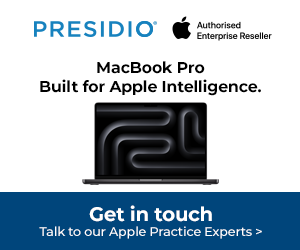End user computing (EUC) advances have the power to transform workplaces and productivity for users, but a deep understanding of users, from their devices to their perceptions of their workspaces, is vital.
This was the advice from Richard O’Brien, technical director, Triangle Technology, who said that it is vital to understand how users use their own workspaces, as well as their perceptions of it, before implementing any EUC system, such as virtual desktops, to ensure that productivity and efficiency could be enhanced with support from the users.
O’Brien said that mobility and remote working should be encouraged, as well as new work practices, to allow users to get the most from the systems.
A question from the audience highlighted a key area of concern in virtual desktop and remote working environments, which was around licensing. Graeme Gordon, EUC specialist for Northern Europe, VMWare, said there were two types of licensing to consider. Firstly, there was the licensing for the platform, such as the server, and VDI infrastructure that served out the desktops, and secondly the licensing for the end user operating system and applications that would live inside the infrastructure.
Gordon said that while certain vendors have been slow to adapt in this area, most had made facilities available to allow their technology and applications to be used in such models without punitive cost or inflexible deployment options. He advised anyone embarking on an EUC deployment to check with vendors, as most would be able to give specific advice as to what can be done with existing licenses before looking at specifics for virtual environments.
Another question from the floor was in relation to data protection and retention, as there were concerns regarding the level of availability of data through smart connected devices (SCD), as well as web delivered desktops and the like. The panel responded that as most data resided on the server and presentation on a remote access device, be it a thin client on-premise, or on a tablet accessing remotely, is just that a presentation. This means that when the devices is logged off, or disconnected from the presentation service, no data is left on the device.
A comment from the floor perhaps reflected a common experience, reporting that the IT department had said that they were not capable of delivering remote, VPN-style access for users. The person making the comment was somewhat incredulous, as was the panel. O’Brien outlined the facilities necessary to provide a basic VPN-style service and indicated that it was built into most firewalls for many years. Gordon too said that the technical features necessary for this had been bundled with most devices right down the value chain and so it is highly unlikely that they were technically incapable. The general was that the IT department in question was obfuscating and unwilling rather than unable to deliver.
However, the value of such systems was brilliantly illustrated by Mark Graham, ICT director, Beaumont Hospital. Graham recounted a particular instance where a clinician was off site in the evening and needed help logging into his desktop remotely. The issue was merely with a password and quickly resolved, with the clinician was able to review the latest test and scan information in relation to a young head injury sufferer. Graham established later that the intervention had changed the course of treatment allowing direct intervention that saw the patient at home within weeks, instead of months.
Graham said of the hospital’s experience with EUC, “virtual desktop may not save a life but it has helped to speed up decisions regarding patient care”.
TechCentral Reporters







Subscribers 0
Fans 0
Followers 0
Followers